Turning off inflammatory protein extends healthy lifespan in mice.
A protein that promotes inflammation could hold the key to a longer, healthier life.
Humans also have the protein, called IL-11, offering hope for a future longevity treatment.
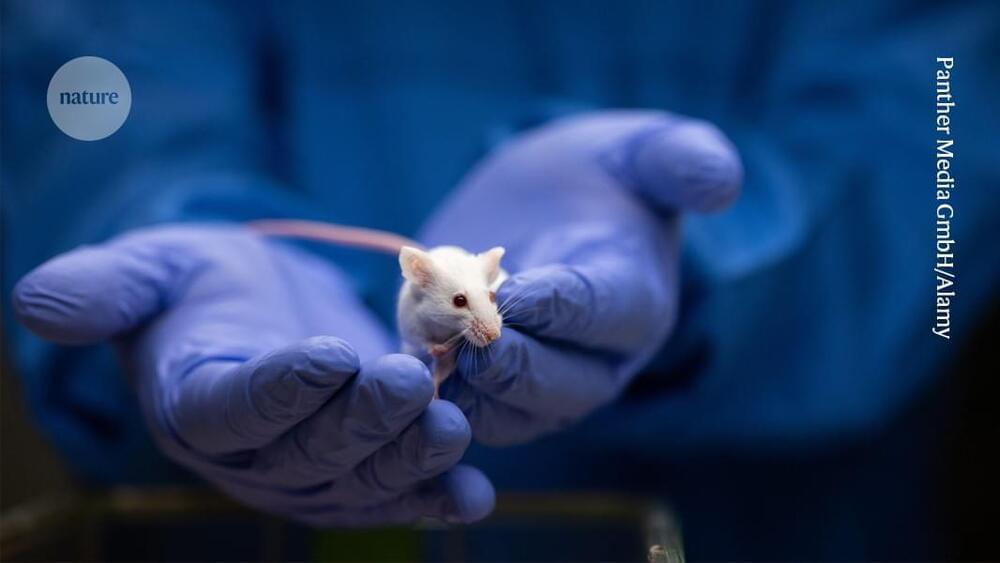
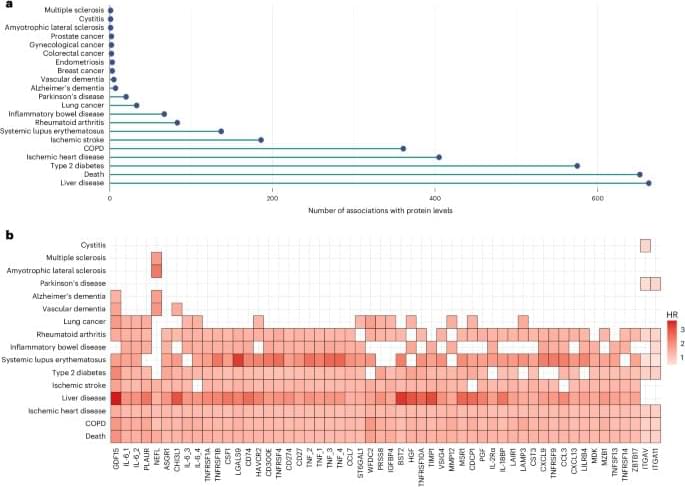
Identifying individuals who are at a high risk of age-related morbidities may aid in personalized medicine. Circulating proteins can discriminate disease cases from controls and delineate the risk of incident diagnoses1,2,3,4,5,6,7,8. While singular protein markers offer insight into the mediators of disease5,9,10,11, simultaneously harnessing multiple proteins may improve clinical utility12. Clinically available non-omics scores such as QRISK typically profile the 10-year onset risk of a disease13. Proteomic scores have recently been trained on diabetes, cardiovascular and lifestyle traits as outcomes in 16,894 individuals14. Proteomic and metabolomic scores have also been developed for time-to-event outcomes, including all-cause mortality6,15,16,17,18,19,20,21.
Here, we demonstrate how large-scale proteomic sampling can identify candidate protein targets and facilitate the prediction of leading age-related incident outcomes in mid to later life (see the study design summary in Extended Data Fig. 1). We used 1,468 Olink plasma protein measurements in 47,600 individuals (aged 40–70 years) available as part of the UK Biobank Pharma Proteomics Project (UKB-PPP)22. Cox proportional hazards (PH) models were used to characterize associations between each protein and 24 incident outcomes, ascertained through electronic health data linkage. Next, the dataset was randomly split into training and testing subsets to train proteomic scores (ProteinScores) and assess their utility for modeling either the 5-or 10-year onset of the 19 incident outcomes that had a minimum of 150 cases available. We modeled ProteinScores alongside clinical biomarkers, polygenic risk scores (PRS) and metabolomics measures to investigate how these markers may be used to augment risk stratification.
Researchers administered an injection of an anti-IL-11 antibody to 75-week-old mice, neutralizing the harmful effects of IL-11.
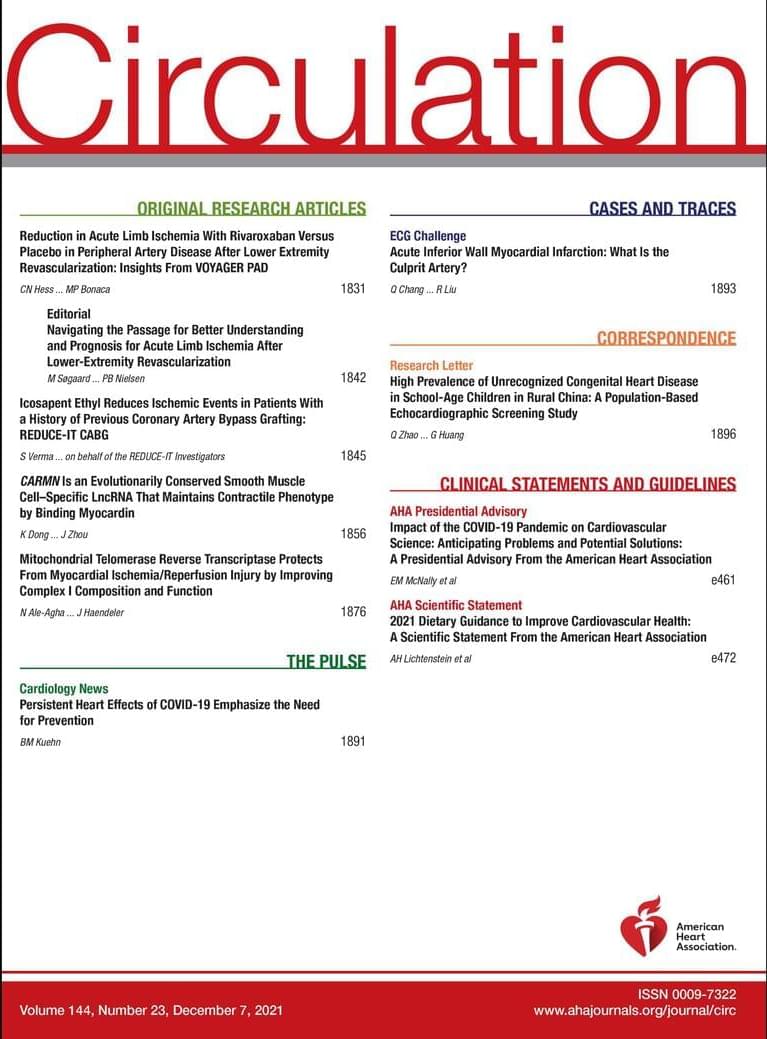
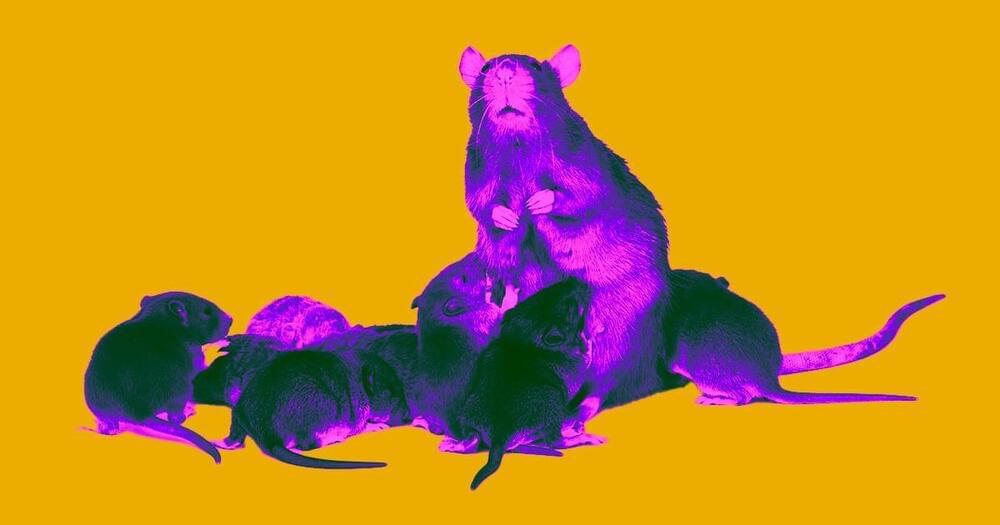
In a new study, lab mice given an experimental drug were jokingly referred to as “supermodel grannies” because they looked so youthful even while aging beyond their expected lifespan.
As the BBC reports, the trials for a drug believed to flush out a protein known as interleukin-11 — which in early development helps build our bones but later in life causes the kinds of inflammation that triggers much of the illness of aging — have already had intriguing success in mice.
Published in the journal Nature, a paper about the research undertaken by scientists at Imperial College London, Duke-NUS in Singapore, and the MRC Lab of Medical Sciences found that when given a drug that purges interleukin-11, the mice became more lean, had healthier fur, and had significantly lower levels of cancer than their counterparts of the same age.
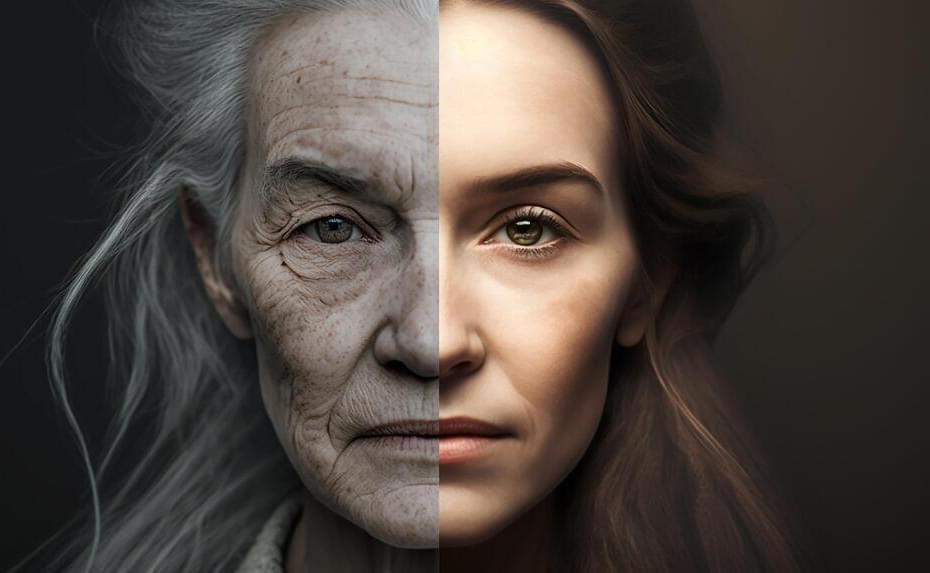

Experiments on a bed of plastic beads reveal a temperature-dependent stiffening over time, which appears to be related to molecular-scale deformations.
Inside a geological fault, small rocks and pebble-sized grains can become increasingly lodged together over time so that the push—or stress—needed to get the granular material flowing grows with time. This frictional “aging” can be attributed to several effects, but researchers have now isolated a thermal effect that appears to be related to molecular-level deformations [1]. The team performed experiments on a bed of tiny beads, or grains, slowly rotating them in a start–stop manner that revealed the signatures of grain aging. The temperature dependence of the effect suggested that the behavior arises from a thermally driven interlocking between irregularities on the grain surfaces. The results could provide new insights into the stick–slip behavior recorded in geological faults.
Granular materials—those made of small particles, like sand or soil—have unique properties. For example, in the polymer industry, the force required to begin stirring granular ingredients on Mondays is greater than on other days because the grains have been left immobile over the weekend. This aging effect, in which the force required to break the network of frictional contacts depends on the time that the particles have been resting, also plays a role in the occurrence of earthquakes and landslides. “The longer you wait, the stronger the granular network becomes,” says Kasra Farain from the University of Amsterdam.

Promising.
A drug that inhibits inflammation helped mice live longer and reduced the animals’ incidence of cancer and age-related health problems.
By Grace Wade

Our bone marrow—the fatty, jelly-like substance inside our bones—is an unseen powerhouse quietly producing 500 billion new blood cells every day. That process is driven by hematopoietic stem cells that generate all of the various types of blood cells in our bodies and regenerating themselves to keep the entire assembly line of blood production operating smoothly.
As with any complex system, hematopoietic stem cells lose functionality as they age—and, in the process, contribute to the risk of serious diseases, including blood cancers. We know that the risk of developing aging-associated diseases is different among different individuals. Surprisingly, however, little is known about whether hematopoietic stem cells age differently between individuals.
“If you take a room full of 50-year-olds, some will be completely gray-haired, others will be salt-and-pepper, and a few will not have any gray hairs at all,” said Jennifer Trowbridge, Dattels Family Endowed Chair and professor at the Jackson Laboratory. “Logically, you’d expect to see the same kind of variation in the function of hematopoietic stem cells—but until now, nobody has studied that directly.”
Researchers from the University of Queensland have found that high-intensity interval training significantly enhances brain function in older adults, with cognitive improvements lasting up to five years. This study, led by Emeritus Professor Perry Bartlett and Dr. Daniel Blackmore, confirms that such exercise can not only improve but sustain cognition in aging populations, potentially reducing the risks and costs associated with dementia.
Researchers from the University of Queensland have conducted a longitudinal study demonstrating that high-intensity interval exercise can enhance brain function in older adults for up to five years. Led by Emeritus Professor Perry Bartlett and Dr. Daniel Blackmore of UQ’s Queensland Brain Institute, the study involved participants engaging in physical exercise and undergoing brain scans.
They have shown high high-intensity exercise boosts cognition in healthy older adults and the improvement was retained for up to 5 years.